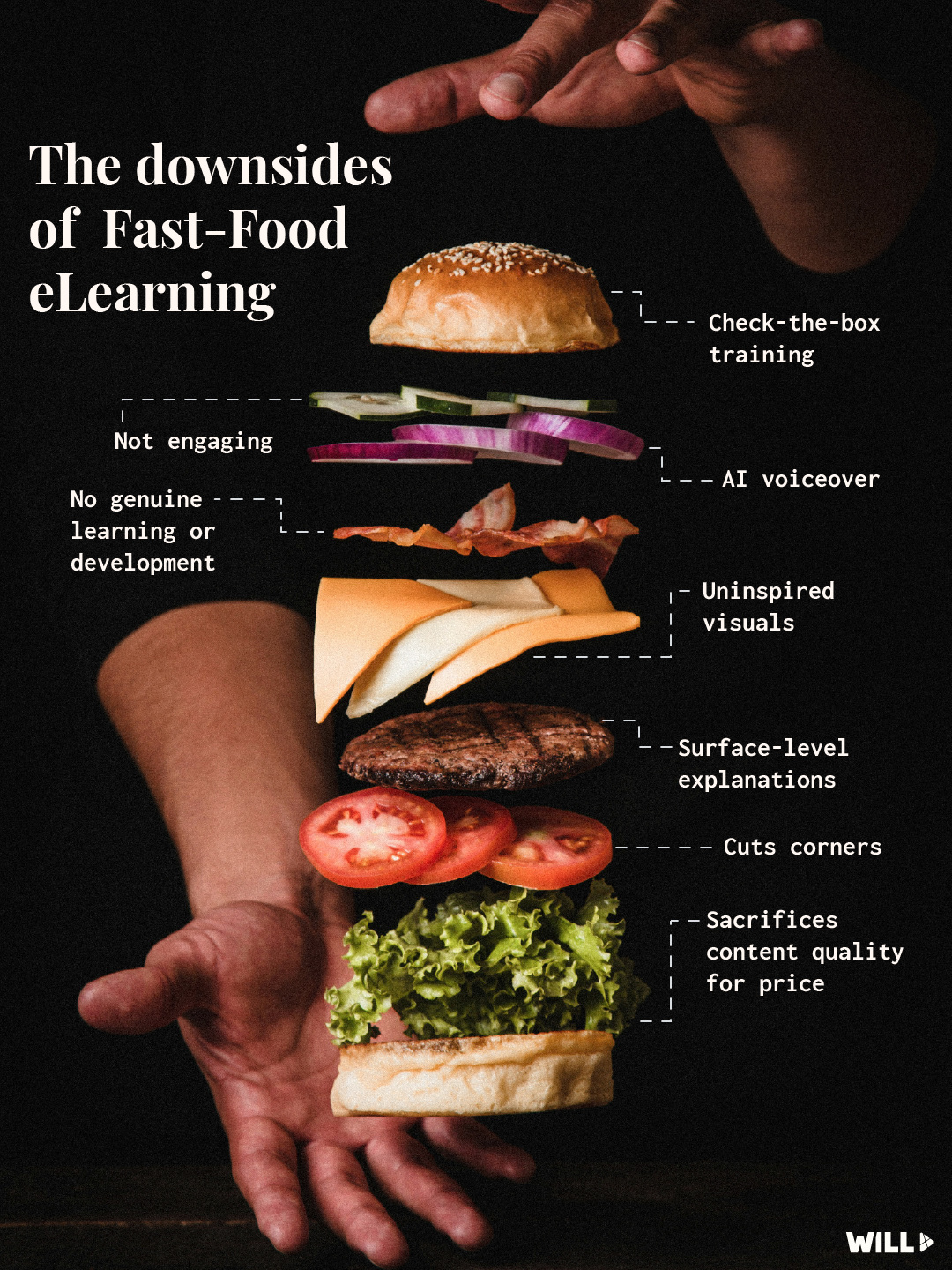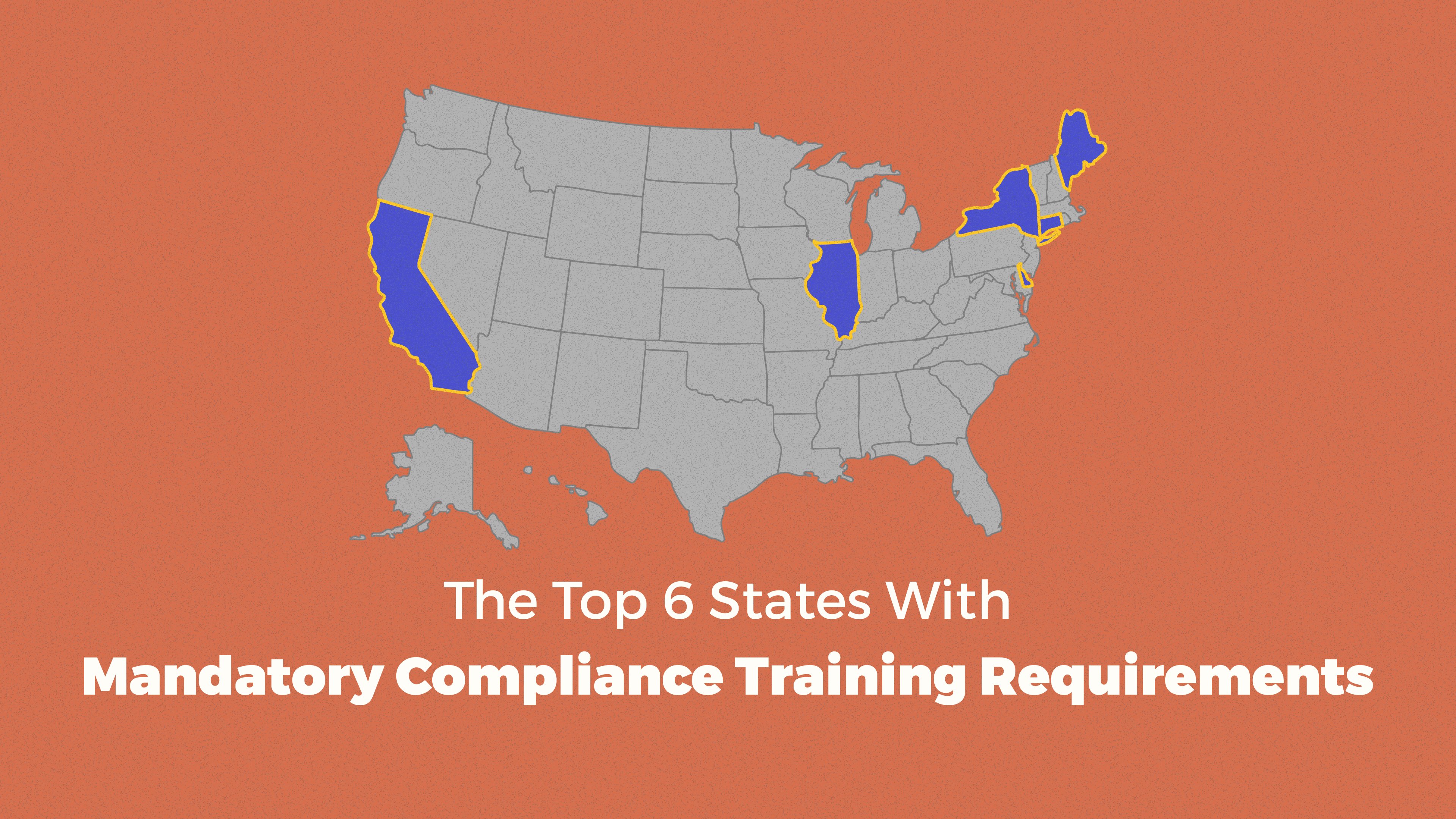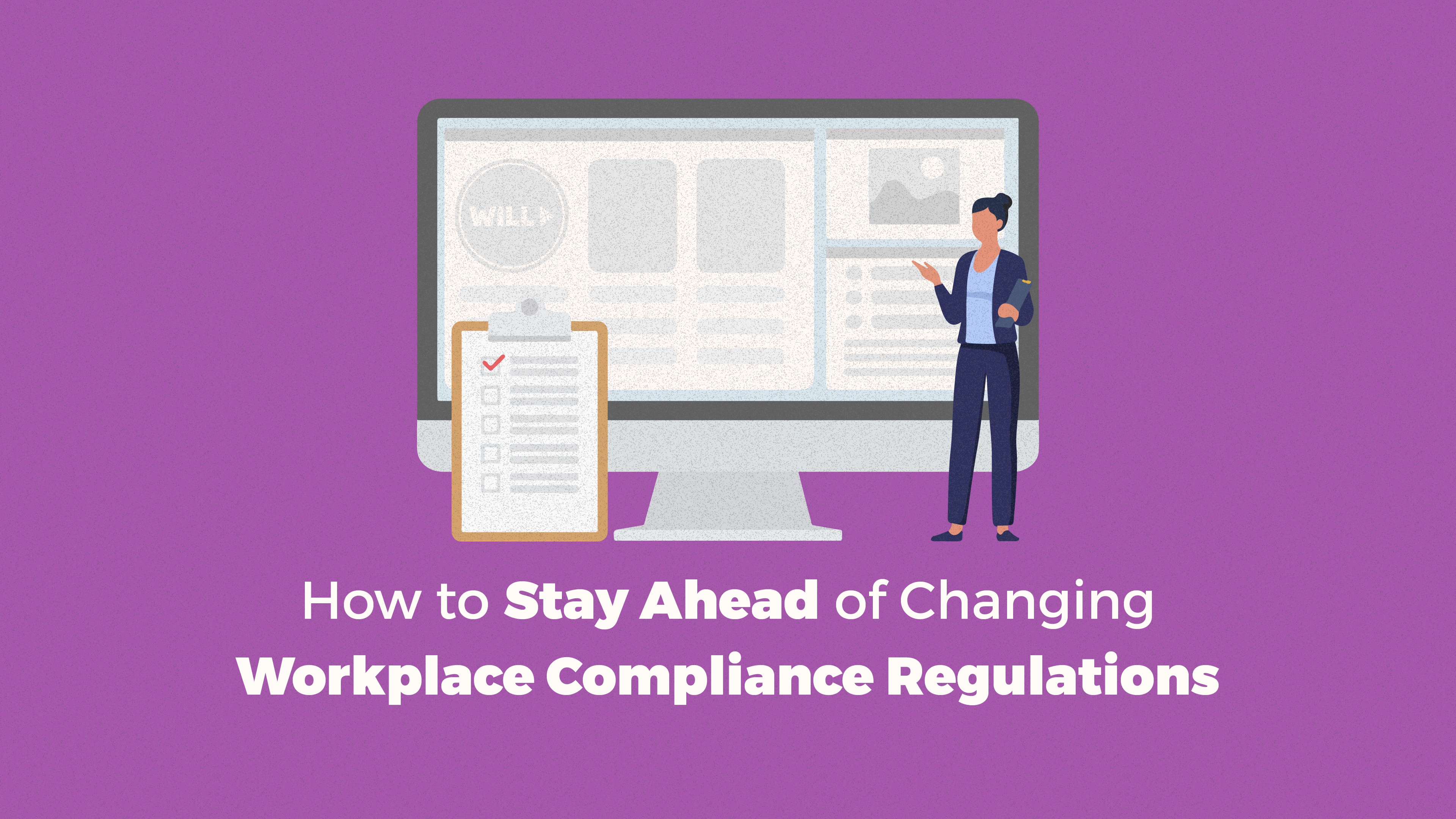Let's delve into the concept of Fast-Food eLearning—a term that resonates with the pervasive trend of shallow, ineffective training modules prioritizing quantity over quality.
Imagine Fast-Food eLearning as the equivalent of a quick, unsatisfying meal that leaves you hungry for substance. It's characterized by its superficiality, akin to "check-the-box" training, where the primary goal is completion rather than genuine learning and development.
These modules often feature a monotonous AI voice delivering rote information, accompanied by uninspired visuals that fail to engage or stimulate the learner. They lack depth, offering only surface-level explanations of basic concepts or procedures without demonstrating their real-world application.
Much like fast food, Fast-Food eLearning is crafted with cost-efficiency in mind, sacrificing meaningful content for affordability. The focus is on cutting corners rather than investing in quality educational experiences.
This approach mirrors a sales-driven mentality in the training industry, where more effort is dedicated to marketing and selling the product than to enhancing its educational value. While these tactics may attract buyers, they ultimately lead to ineffective learning outcomes.
To draw a parallel, consider a scenario where an organization opts for the cheapest catering option for a special event. Similarly, organizations prioritizing Fast-Food eLearning are choosing quantity over quality, delivering training that may fulfill a requirement but fails to nourish employees' minds.
Organizations committed to meaningful learning and development understand the importance of investing in high-quality eLearning experiences.
However, there is an alternative approach. Organizations committed to meaningful learning and development understand the importance of investing in high-quality eLearning experiences. By prioritizing engagement, relevance, and applicability, they create modules that truly resonate with learners and drive tangible results.
In conclusion, while Fast-Food eLearning may offer a quick fix, organizations serious about employee development should aspire for more. By embracing a culture of learning excellence, they can elevate their training initiatives to foster genuine growth and innovation within their workforce.







